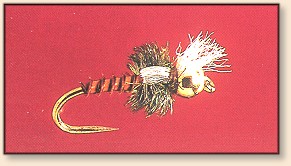Biots used in fly tying come from the leading edges of
flight feathers from turkeys, geese and duck. Commercially
dyed biots are often brittle; you can soak them in water
before wrapping to prevent them from splitting when
wrapped. Biots form attractive bodies for smaller flies.
Materials List: Biot Midge Pupa
Hook: Nymph or scud, # 14 - 16.
Thread: Brown.
Beadhead: Counterdrilled brass head.
Abdomen: Biot Olive or brown ostrich herl.
Wing case: Antron yarn.
Thorax: Peacock herl.
Instructions - Biot Midge Pupa:
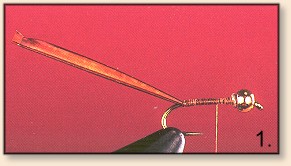
1. Slide counterdrilled bead (small end forward) on
the hook and secure it. Advance the thread to the
rear, and mount the biot with the notch facing up.
Wind the thread forward as shown.
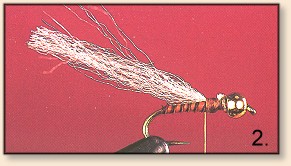
2. To form a ribbed body, do not wrap over to expose
the fringe. Wind the biot forward forming even, fringed
spirals. Secure it at the tie-off position and
trim the excess. Mount the Antron yarn and trim the
excess as shown.
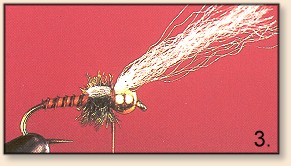
3. Mount the peacock herl and wrap it over the thorax
area. Secure it and trim the excess. Pull the Antron
forward and secure it behind the bead. Tie off the thread
behind the bead and cement the thread wraps. Trim the
Antron to size.
4. Finished fly.
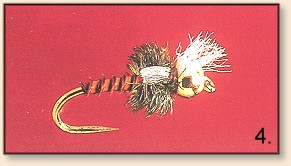
Use the beadhead version to fish deep and the unweighted
version to fish shallow. ~ Jim Schollmeyer
Credits: From Nymph Fly-Tying Techniques
by Jim Schollmeyer and published by Frank Amato Publications.
We appreciate use permission.

